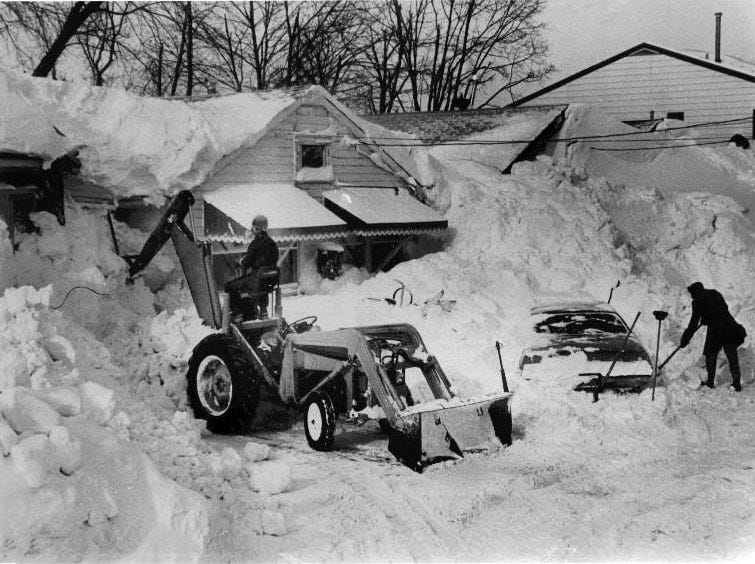When I was a kid growing up in a Detroit suburb in the 1960s and 70s, the only time the lights went out was during a severe electrical storm where the tornadoes knocked out the power lines. Snow, even seven feet? Sleet? Freezing rain? Temperatures of 30 below zero, where parts on my father’s car froze? No problem. Detroit Edison with its Fermi nuke plant could handle it all.
Contrast that with Buffalo’s blizzard today. It’s being compared to the 1977 blizzard, which also hit Michigan (picture below). I remember it well. But this time, the lights are going out – and the electric heaters. Maybe that switch away from natural gas and heating oil to “clean” electricity isn’t the best idea. Syracuse.com reports Monday evening: “More than 12,000 people still do not have power.”
But it’s not just in the Bad Weather States. When I came out here to California in 1987, I was surprised the power went out every couple of months. It still does. It happened to me in balmy Costa Mesa two months ago. I’m sitting here writing and the lights, computer screen, internet and Miles Davis on the stereo went out. I used my cell to try to find out what was going on with Southern California Edison. There’s a site that shows blackouts, but mine wasn’t on it.
Only a mild summer – no global warming! – in California prevented the expected planned blackouts in 2022. The state’s rickety electric grid is made worse by demanding a parallel grid for “alternative” energy, such as wind and solar. And those have their own problems: solar doesn’t produce and night, and wind when there’s no wind. Los Angeles also is banning gas stoves in new houses and apartments, mandating only electric.
It’s like living in Keev when one of those Russian drones strikes a power station. Only we’re not in a war zone. Are we?
How is it 1963 technology is better than 2023 technology?




